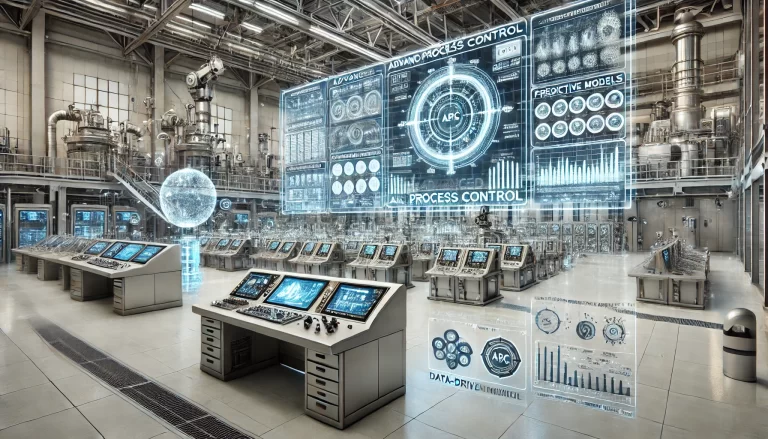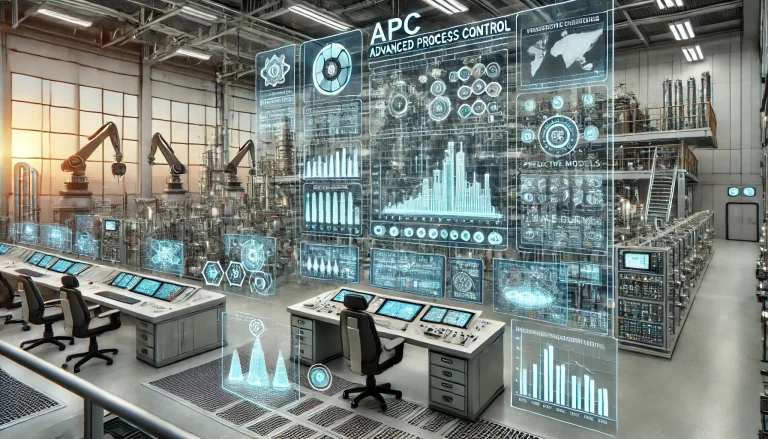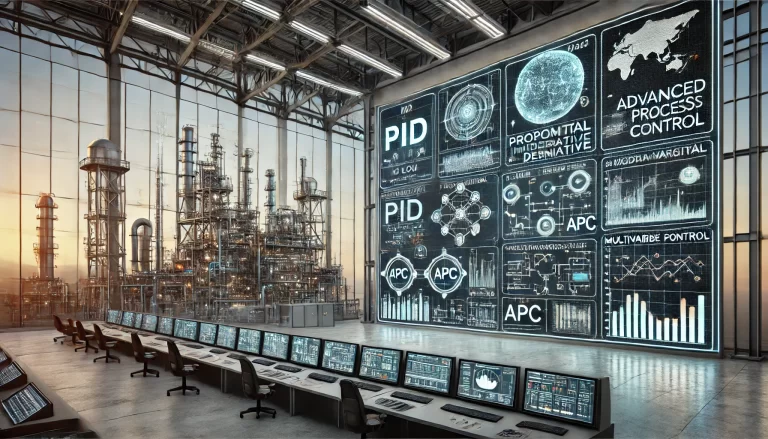In large-scale chemical control systems, a typical structure involves a hierarchical separation of control and optimization layers based on time scales. The system is divided as follows:
Basic Control (seconds)
Advanced Control (minutes)
Real-time Optimization (hours)
Scheduling (days/weeks)
Planning (months/years)
This separation simplifies complex problems by addressing different time scales in distinct layers.

Can Advanced Control Replace Basic Control?
From a computational standpoint, advanced control could potentially replace basic control. Many Distributed Control System (DCS) vendors offer advanced control modules capable of performing real-time, second-level control. Some systems even achieve advanced control via external modules or through OPC integration.
However, it is essential to note that in many cases, using advanced control where basic PID control is sufficient leads to unnecessary complexity. For optimization tasks that a PID controller can handle, introducing advanced control may not only be unnecessary but may also fail to fully utilize the advanced system’s capabilities.
Enter Self-Optimizing Control (SOC)
Traditional control systems separate the control layer from the optimization layer. The optimization layer is responsible for adjusting setpoints to achieve optimal performance, while the control layer focuses on maintaining system stability. However, SOC suggests that feedback control, in addition to maintaining stability, can actively contribute to optimizing economic performance.
SOC proposes that well-chosen controlled variables allow the system to self-optimize. In the event of disturbances, the system can adjust its operating conditions automatically, without needing to change the setpoints in the control loop. This allows the system to approximate optimal control with minimal adjustment.

Advantages of SOC
Compared to traditional real-time optimization methods, SOC provides significant advantages:
Fast Optimization: SOC is executed through high-frequency feedback control, making the optimization process faster than traditional methods.
Simplified System Design: By eliminating the need for a separate optimization layer, SOC simplifies the control system’s design and reduces maintenance costs.
Cost Efficiency: Since SOC can work effectively without high-end optimization algorithms, it lowers system implementation and operational costs.
Real-World Applications
In practice, if a system’s basic control is inadequate, a root cause analysis should be performed to identify and resolve the problem through automation. There’s no need for advanced control or real-time optimization when proper root cause analysis and automation can solve the issue.

Sigurd Skogestad’s Perspective
Professor Sigurd Skogestad from the Norwegian University of Science and Technology argues that advanced control and real-time optimization may not be necessary for process optimization. In his view, many manual high-frequency operations could be automated with the proper system design and operational knowledge.
While this viewpoint may seem hard to imagine, it is worth noting that most high-frequency manual operations are symptoms of underlying issues in the system. These operations are often effective and automating them requires solid knowledge of the process and the ability to apply that knowledge systematically.

The Key to Automation: Knowledge, Methodology, and Systems
The real barrier to automating operational knowledge is not the lack of technology but the absence of clear methodologies, knowledge, and systems to support it. As Skogestad suggests, achieving automation does not require new control algorithms, but rather the effective use of existing PID controllers and a focus on improving operational practices.
A true “smart factory” is one that automates operational knowledge and reduces manual intervention through systematized methods, knowledge codification, and well-designed processes. The challenge lies in overcoming the resistance to change and fostering a culture of continuous improvement.
